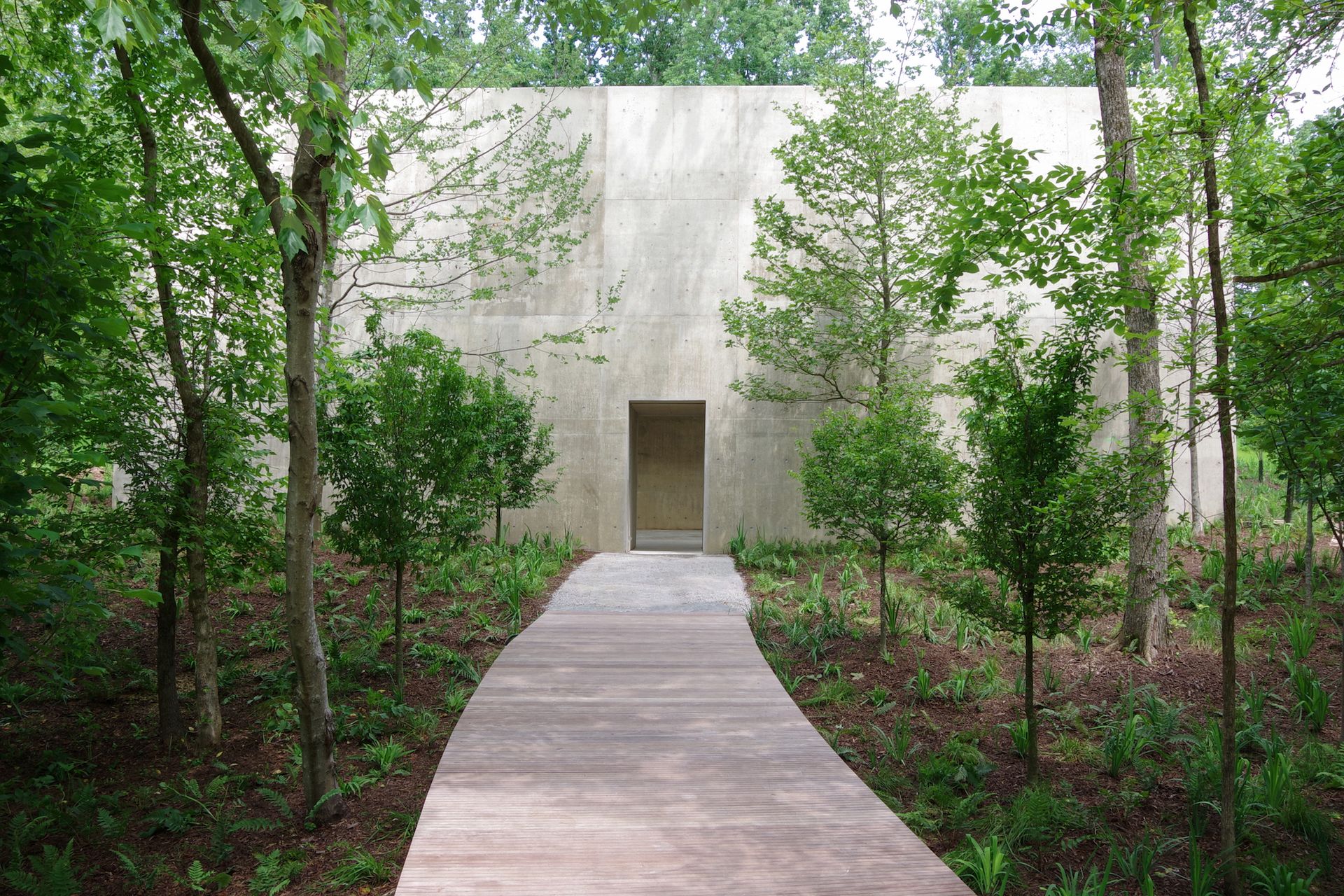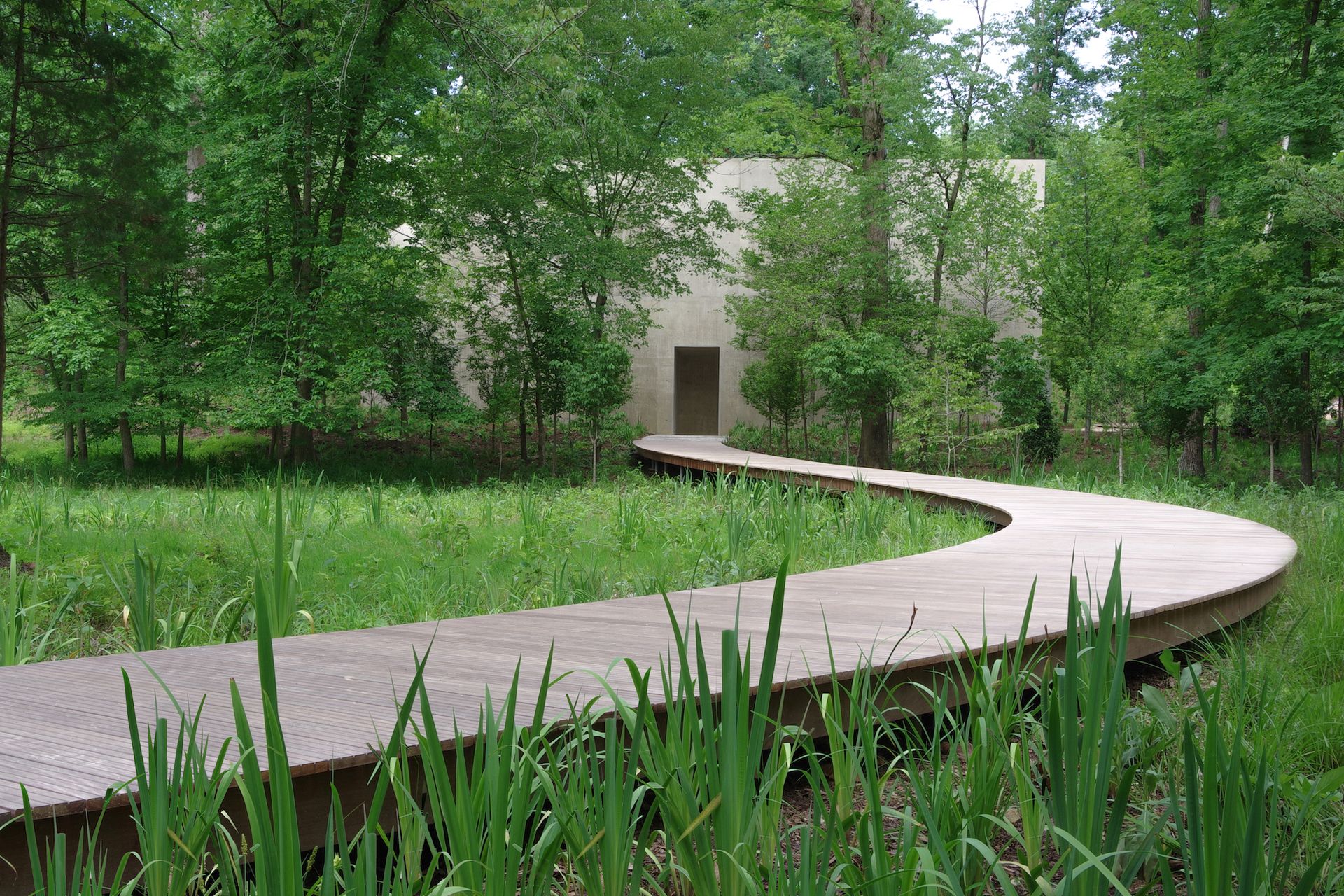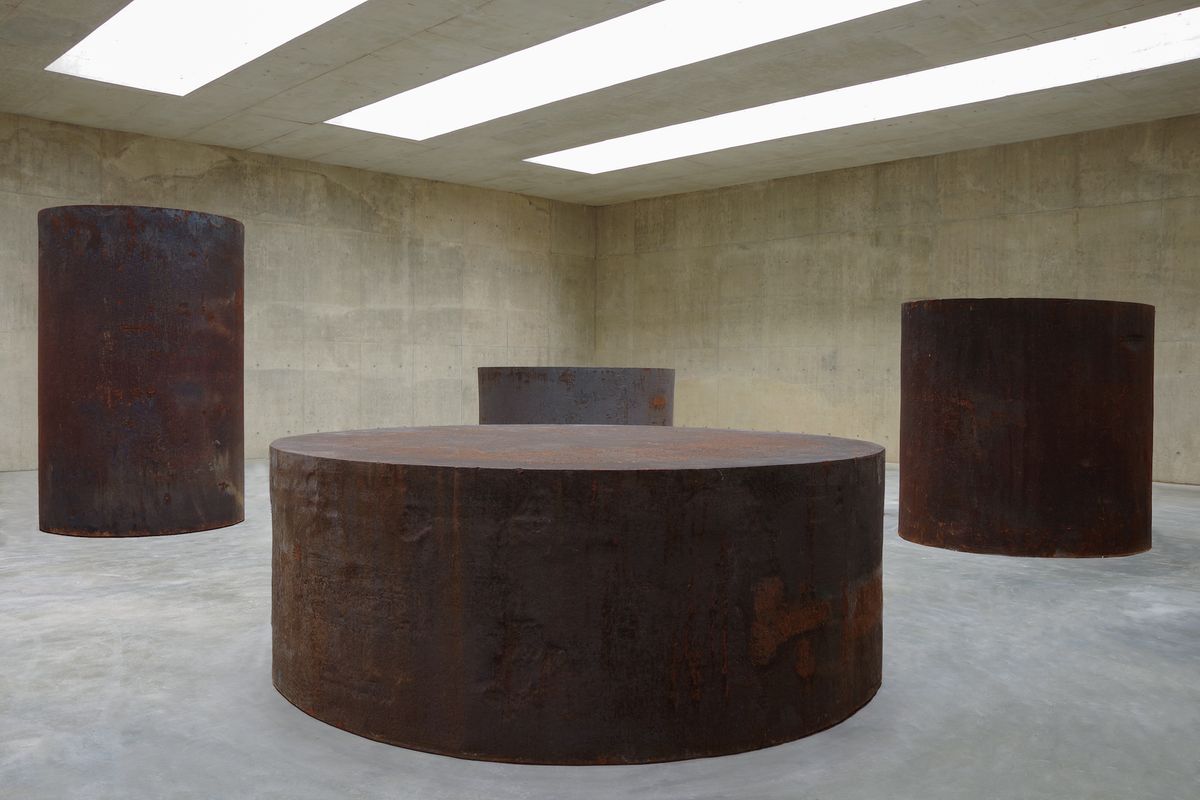A wooden footbridge leads through dense forest to a clearing. In this sylvan glade stands a concrete temple. Inside are four totems, forged in steel, each one weighing 82 tons. Daylight streaming through light wells and skylights set into the ceiling above illuminate the rich rusted patina on the surface of the cylinders, each one with the colour and texture of the surface of Mars.
Four Rounds: Equal Weight, Unequal Measure (2017) is a monument to austerity in art by Richard Serra. The four units push at the absolute limits of what a foundry is capable of forging. Equally impressive is the new structure designed to house the work at its permanent home at Glenstone, the contemporary art museum in Potomac, Maryland, founded by collectors Emily Wei and Mitchell Rales.
This new temple is the latest pavilion designed by Thomas Phifer for the museum. Much like the Rothko Chapel in Houston or the Ellsworth Kelly shrine in Austin, the building is a purpose-built facility for showcasing the work of a single artist. Two artists, really: the new Glenstone pavilion is a conversation in form and material between Phifer and Serra, rendered in concrete and steel.
“Richard Serra lives in this world with his work in white sheet-rock spaces with perfect concrete floors, and he hates that,” Phifer says. “He wants these spaces to have an authenticity to them, made in a symbiotic way to his work.”

Approaching the new Thomas Phifer and Partners building housing Four Rounds: Equal Weight, Unequal Measure, designed in collaboration with the artist, Richard Serra. Courtesy: Glenstone Museum
Serra’s piece was first exhibited at David Zwirner in New York City in 2017. After the run in the gallery, the steel cylinders were left in a yard in New Jersey, exposed to the elements. Shipping the works to suburban Washington, DC, required a traffic study. The sculpture was installed in place on a four-feet-thick concrete floor slab before the building was finished; like a ship in a bottle, the 4,000-sq.-ft structure was built around the sculpture.
Four Rounds joins two other works by Serra at Glenstone: Sylvester (2001), a torqued steel spiral, and Counter 290 (2004), a curving line in steel. The new pavilion is also the second Glenstone project for Phifer and Partners. The firm also designed the museum’s 2018 expansion, which is home to a monumental installation by Michael Heizer, Collapse” (1967/2016), among other contemporary works.
For the Serra pavilion, Phifer deployed an utterly spare palette of cast-in-place structural concrete for the building. Tie holes in the concrete blocks show where wooden structural supports were used during casting. The concrete forms are standard in size; the colour and tone of the concrete is how it came from the plant. Like the minimalist artwork it houses, the building speaks to the methods of its production.

Approaching the new Thomas Phifer and Partners building housing Four Rounds: Equal Weight, Unequal Measure, designed in collaboration with the artist, Richard Serra. Courtesy: Glenstone Museum
“There aren’t too many gestures here,” Phifer says. “There’s the proportion of the room, the height and the width of every wall, the character of the lines, the height of the space, the quality of the concrete and the proportioning of the door. And the path and the choreography of it you take to get here.”
The architect describes taking this path to the Serra sanctuary as a process of “cleansing”. Unlike the bustle of traditional museum galleries, the natural forest walk prepares viewers to experience the work. The theatricality of this new production is a quality that distinguishes Glenstone from its peers (namely Dia:Beacon).
Opening so soon after the 2018 expansion, the new pavilion unlocks the intriguing possibility that the Glenstone campus is far from complete. For his part, Phifer describes the experience of designing the addition as a unique collaboration between artist and architect.
“He is so observant about the space that his work lives in,” Phifer says. “That experience, to me, is a true, life-changing moment. Because who is better than Richard?”


